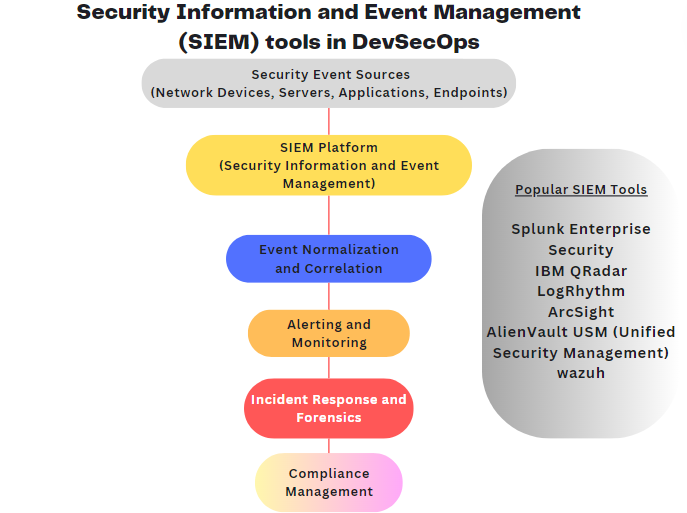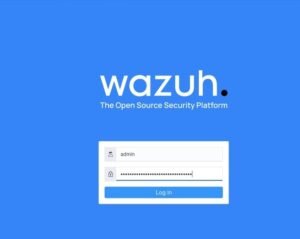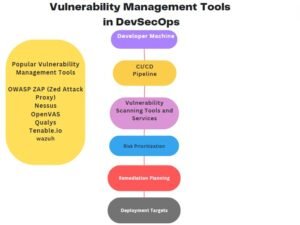Event Management, particularly in the context of DevSecOps, involves the use of Security Information and Event Management (SIEM) tools to collect, analyze, and respond to security events and incidents across an organization’s IT infrastructure. SIEM tools play a crucial role in identifying potential security threats, detecting anomalous activities, and facilitating rapid incident response. Let’s delve into the details of SIEM in DevSecOps, including its key components, benefits, popular tools, and a diagram illustrating its workflow.
Key Components of SIEM:
Data Collection: SIEM tools collect security event logs and data from various sources within the IT infrastructure, including network devices, servers, applications, and endpoints. These sources generate logs containing valuable information about user activities, system events, and network traffic.
Normalization and Correlation: Once collected, the SIEM platform normalizes and correlates the incoming data to identify patterns, trends, and potential security incidents. Normalization involves standardizing the format and structure of logs from different sources, while correlation involves identifying relationships and dependencies between different events.
Alerting and Monitoring: SIEM tools analyze correlated events to generate alerts and notifications about potential security threats or suspicious activities. Security analysts can monitor these alerts in real-time or review historical data to identify and investigate security incidents.
Incident Response and Forensics: In the event of a security incident, SIEM tools provide capabilities for incident response and forensics. They facilitate the investigation of security events, analysis of root causes, and remediation of security breaches through centralized incident management workflows.
Compliance and Reporting: SIEM platforms help organizations meet regulatory compliance requirements by providing reporting capabilities and audit trails. They generate compliance reports, analyze security posture, and track adherence to security policies and standards.
Benefits of SIEM in DevSecOps:
Improved Threat Detection: SIEM tools enable organizations to detect and respond to security threats more effectively by providing real-time monitoring and analysis of security events across the IT infrastructure.
Streamlined Incident Response: By centralizing security event management and providing automated incident response capabilities, SIEM platforms help organizations streamline incident response processes and reduce response times.
Enhanced Visibility: SIEM tools provide comprehensive visibility into the organization’s security posture by aggregating and correlating security event data from multiple sources. This visibility helps identify potential security risks and vulnerabilities proactively.
Compliance Management: SIEM platforms assist organizations in meeting regulatory compliance requirements by providing reporting capabilities, audit trails, and documentation of security events and activities.
Threat Intelligence Integration: SIEM tools can integrate with external threat intelligence feeds to enhance threat detection capabilities and provide context for security events. This integration enables organizations to stay informed about emerging threats and trends.
Popular SIEM Tools:
Splunk Enterprise Security: Splunk Enterprise Security is a leading SIEM platform that provides real-time monitoring, threat detection, and incident response capabilities. It offers advanced analytics, machine learning, and customizable dashboards for security operations.
IBM QRadar: IBM QRadar is an enterprise-grade SIEM solution that offers log management, event correlation, and threat intelligence integration. It provides advanced threat detection, incident response workflows, and compliance reporting features.
LogRhythm: LogRhythm is a comprehensive SIEM platform that combines log management, security analytics, and user behavior analytics. It offers real-time monitoring, threat hunting, and automated response capabilities.
ArcSight: ArcSight, now part of Micro Focus, is a scalable SIEM platform that provides log management, correlation, and analysis capabilities. It offers pre-built content, dashboards, and reporting features for security operations.
AlienVault USM (Unified Security Management): AlienVault USM is an all-in-one SIEM platform that integrates security event management, threat intelligence, and incident response capabilities. It offers built-in compliance reporting and threat detection features.
Diagram- SIEM Workflow in DevSecOps:
Security Event Sources: Security event logs and data are generated by various sources within the IT infrastructure, including network devices, servers, applications, and endpoints.
SIEM Platform: The SIEM platform collects, normalizes, and correlates security event data from multiple sources. It analyzes the data to identify patterns, trends, and potential security incidents.
Event Normalization and Correlation: The SIEM platform normalizes the incoming data to standardize the format and structure of logs from different sources. It then correlates the normalized data to identify relationships and dependencies between different events.
Alerting and Monitoring: The SIEM platform analyzes correlated events to generate alerts and notifications about potential security threats or suspicious activities. Security analysts monitor these alerts in real-time or review historical data to investigate security incidents.
Incident Response and Forensics: In the event of a security incident, the SIEM platform facilitates incident response and forensics. It provides capabilities for investigating security events, analyzing root causes, and remediating security breaches through centralized incident management workflows.
Compliance Management: The SIEM platform assists organizations in meeting regulatory compliance requirements by providing reporting capabilities, audit trails, and documentation of security events and activities.
Conclusion:
SIEM plays a crucial role in DevSecOps by providing capabilities for collecting, analyzing, and responding to security events and incidents across the organization’s IT infrastructure. By centralizing security event management, automating incident response workflows, and providing real-time monitoring, SIEM platforms help organizations detect and mitigate security threats effectively, enhancing their overall security posture. Through integration with other security tools and technologies, SIEM enables organizations to achieve greater visibility, compliance, and resilience in the dynamic landscape of DevSecOps.
To Explore More in DevSecOps- Read More :
Roles and Responsibilities of DevSecOps Engineer
DevSecOps Tool-Static Application Security Testing (SAST) tools
DevSecOps Tool-Dynamic Application Security Testing (DAST) Tools
DevSecOps Tool-Software Composition Analysis (SCA) Tools
DevSecOps Tool-Container Security Tools in DevSecOps
DevSecOps Tool-Infrastructure as Code (IaC) security Tools
DevSecOps Tools – Secrets Management Tools
DevSecOps Tools – Vulnerability Management Tools
DevSecOps Tools – Security Orchestration, Automation, and Response (SOAR) Tools
Identity and Access Management-(IAM) in DevSecOps
DevSecOps Tools – Security Information and Event Management (SIEM) tools




